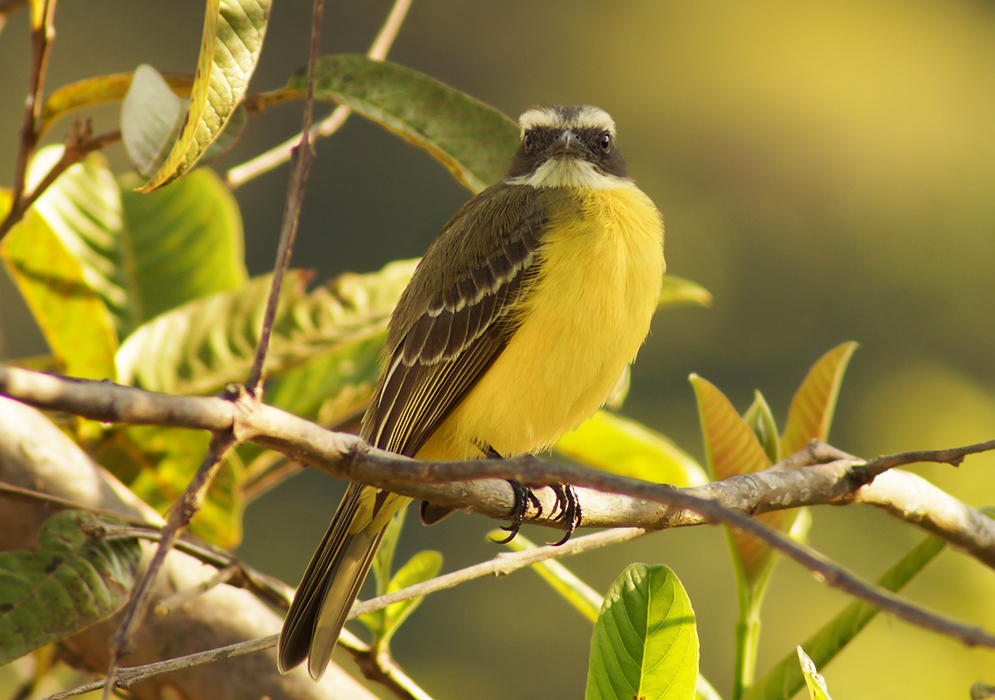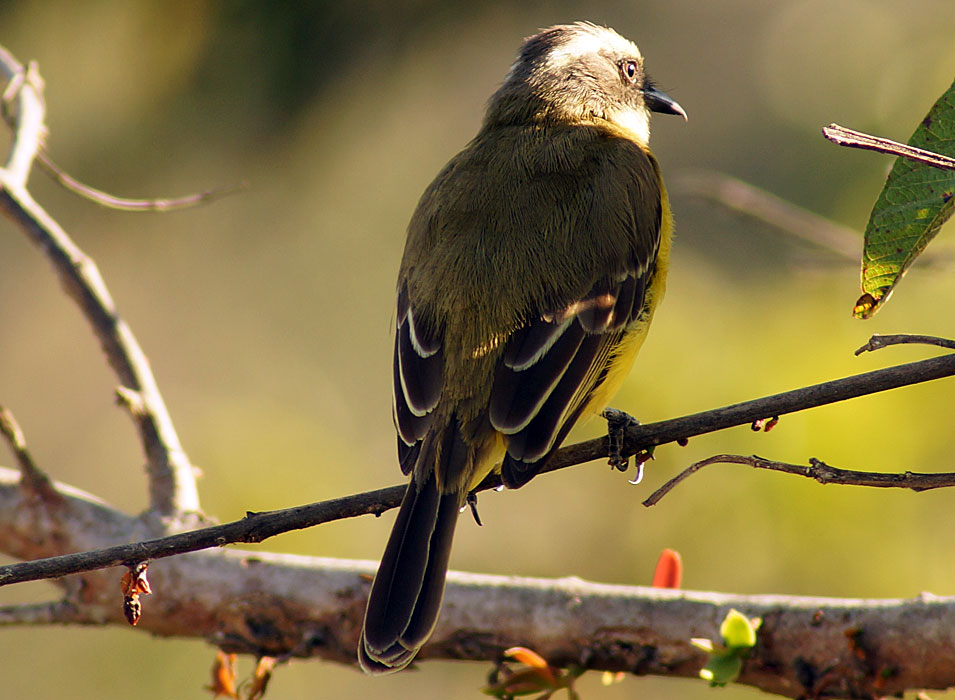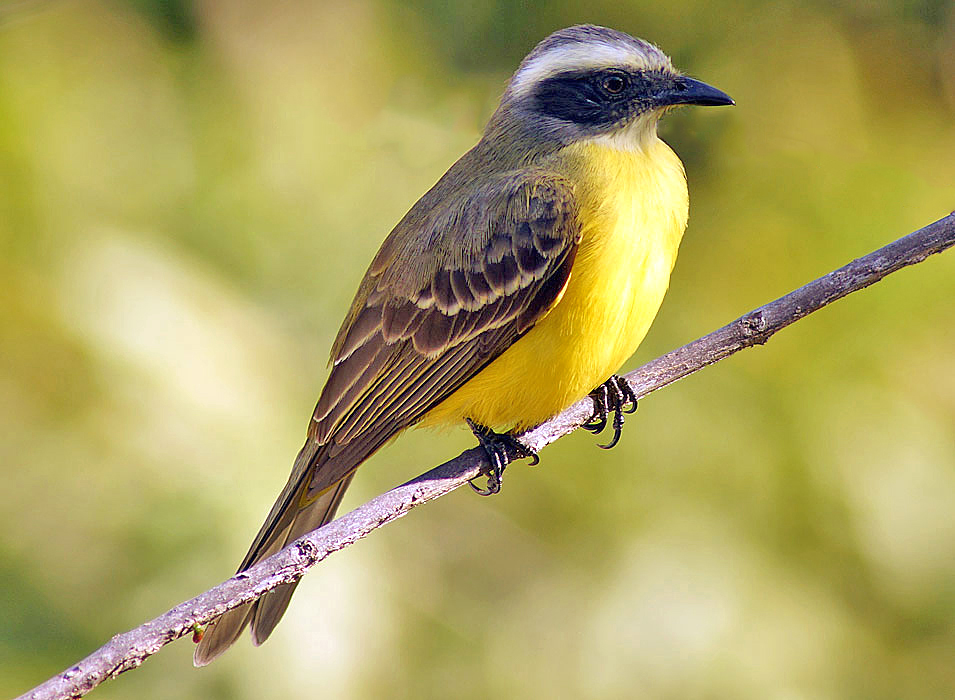This post has 11 Simple Fields-fields attached. Show fields.

The Social Flycatcher is a passerine bird from the Americas. Adult Social Flycatchers are about 6.3 to 7.1 inches in length and weigh between 0.85 to 0.95 ounces. They have a dark grey head with a distinctive white eyestripe and a crown stripe that ranges from orange to vermilion, though this crown stripe is often concealed. Their upperparts are olive-brown, with the wings and tail being brown with faint rufous fringes. The underparts are yellow, and the throat is white. Young birds have a paler eye mask, reduced crown stripe, and chestnut fringes on their wing and tail feathers. The Social Flycatcher has a wide distribution range, breeding in various environments from northwestern Mexico south to northeastern Peru, southern Brazil, and northwestern Argentina. They thrive in open woodlands, plantations, and pastures with some trees. The bird's adaptability is evident in its ability to also inhabit human-modified habitats like secondary forests, urban parks, and gardens. They forage using a range of aerobatic maneuvers to catch insects in flight, hover, and glean for prey and small berries from plants. They also pick off prey from the ground and occasionally enter shallow waters to feed on aquatic invertebrates, tadpoles, and small fish. The bird has been observed foraging alongside common marmosets, possibly cooperating to flush prey from hiding. Social Flycatchers build large roofed nests made of stems and straw, often near or over water and close to wasp, bee, or ant nests for protection. The Social Flycatcher is classified as a species of Least Concern on the IUCN Red List with a population of more than 50 million mature individuals. The species is versatile in terms of habitat, from sea level to 3,640 meters. Photograhped in Minca, Colombia.





